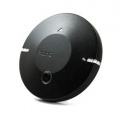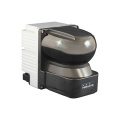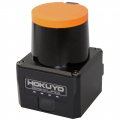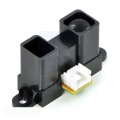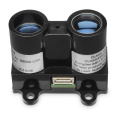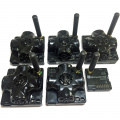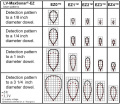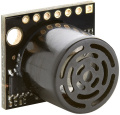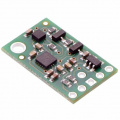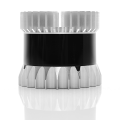Difference between revisions of "Category:Sensors"
(Changed categories.) |
(Tag: Visual edit) |
||
| (One intermediate revision by one other user not shown) | |||
| Line 4: | Line 4: | ||
*For a complete list of our available sensors, <sdr category id=35>please visit this link</sdr category> | *For a complete list of our available sensors, <sdr category id=35>please visit this link</sdr category> | ||
| + | *For a thorough overview of sensor types, advantages, and disadvantages, visit our [[Sensor Selection]] page | ||
*Accelerometers, Gyros, GPS, & Compasses: Accelerometers, Gyros, GPS, & Compasses. Measure acceleration and track rotation with these accelerometers, gyroscopes, compasses/magnetometers, and combined inertial measurement units (IMUs) and orientation sensors. | *Accelerometers, Gyros, GPS, & Compasses: Accelerometers, Gyros, GPS, & Compasses. Measure acceleration and track rotation with these accelerometers, gyroscopes, compasses/magnetometers, and combined inertial measurement units (IMUs) and orientation sensors. | ||
*Contact Sensors: Contact Sensors. Switches and Bumper Switches used to indicated when a physical limit has been reached. | *Contact Sensors: Contact Sensors. Switches and Bumper Switches used to indicated when a physical limit has been reached. | ||
| Line 15: | Line 16: | ||
[[Category:Components]] | [[Category:Components]] | ||
| − | |||
Latest revision as of 16:26, 13 April 2021
This is where you can find information on different types of sensors, how they function, and how to connect them to your robot! We offer a wide range of sensors. The more sensors used, the better the autonomy will be. Relying on only one type of sensor for all your positioning will work for simple situations, but will probably cause issues for any complex positioning or for any positioning that requires higher precision.
In robotics, sensors can be used to monitor your environment or to determine your robot's position relative to some object. Standard sensors for environment monitoring can range from temperature thermocouples, gas, and radiation. The standard positioning sensors are Sonic and IR for object detection and GPS, gyroscopes, and accelerometers to determine relative location, direction, and airspeed. For ground travel and RPM feedback, a combination of our encoder enabled motors and our encoder buffer board make it incredibly easy to implement your own speed control algorithms and RPM feedback. The encoder can also be used to keep track of the distance traveled, but with skid steer the more you turn/skid the more inaccurate the reading because of the wheel slips/skids resulting in encoder counts, but no relative movement.
- For a complete list of our available sensors, please visit this link
- For a thorough overview of sensor types, advantages, and disadvantages, visit our Sensor Selection page
- Accelerometers, Gyros, GPS, & Compasses: Accelerometers, Gyros, GPS, & Compasses. Measure acceleration and track rotation with these accelerometers, gyroscopes, compasses/magnetometers, and combined inertial measurement units (IMUs) and orientation sensors.
- Contact Sensors: Contact Sensors. Switches and Bumper Switches used to indicated when a physical limit has been reached.
- Current Sensors: An assortment of unidirectional and bidirectional Hall effect-based current sensors. They offer a very low-resistance current path and electrical isolation between the current source and the measuring circuit.
- Force Sensors: Force-sensing resistors (FSRs) are passive components that exhibits a decrease in resistance when there is an increase in the force applied to the sensor allowing you to create a sensor that is able to detect force or pressure.
- Gas Sensors: Gas sensors makes it possible to measure concentrations of gasses such as alcohol, methane, propane, butane, and carbon monoxide.
- Magnetic Guide Sensors: Precision magnetic sensor for detecting and measuring the position of a magnetic track along the horizontal axis, for use in Automatic Guided Vehicles and other Automation applications.
- Optical Sensors - IR, PIR, Photo, & Lasers: Optical IR Sensors & Laser Range Finders. IR distance sensors make it easy to detect and range objects. The laser range-finder is inexpensive, accurate and easy to use with a 240 degrees scan area.
- Sonar Range Finders: Accurately measure distances over a wide range with our assortment of ultrasonic distance sensors from Maxbotix and Devantech.
- Temperature and Humidity Sensors: These sensors measure the humidity of the air and can measure the temperature. Great features for your microcontroller project.
Pages in category "Sensors"
The following 12 pages are in this category, out of 12 total.
Media in category "Sensors"
The following 12 files are in this category, out of 12 total.
- here gps.jpg 250 × 250; 5 KB
- Hokuyo 3D Lidar YVT-35LX.jpg 1,200 × 1,200; 33 KB
- Hokuyo UST10LX 2D Lidar.jpg 1,400 × 1,400; 156 KB
- Infrared IR Sensor.jpg 600 × 600; 134 KB
- LIDAR-Lite v3.jpg 600 × 600; 91 KB
- limit switch.jpg 253 × 200; 10 KB
- Marvelmind IPS.jpg 1,400 × 1,400; 239 KB
- maxsonar beam patterns.jpg 600 × 522; 70 KB
- maxsonar ez1 ultrasonic sensor.jpg 600 × 575; 136 KB
- minimu-9 imu.jpg 561 × 561; 45 KB
- Ouster 3D Lidar.png 600 × 600; 151 KB
- us digital h1 encoder.jpg 854 × 640; 44 KB
